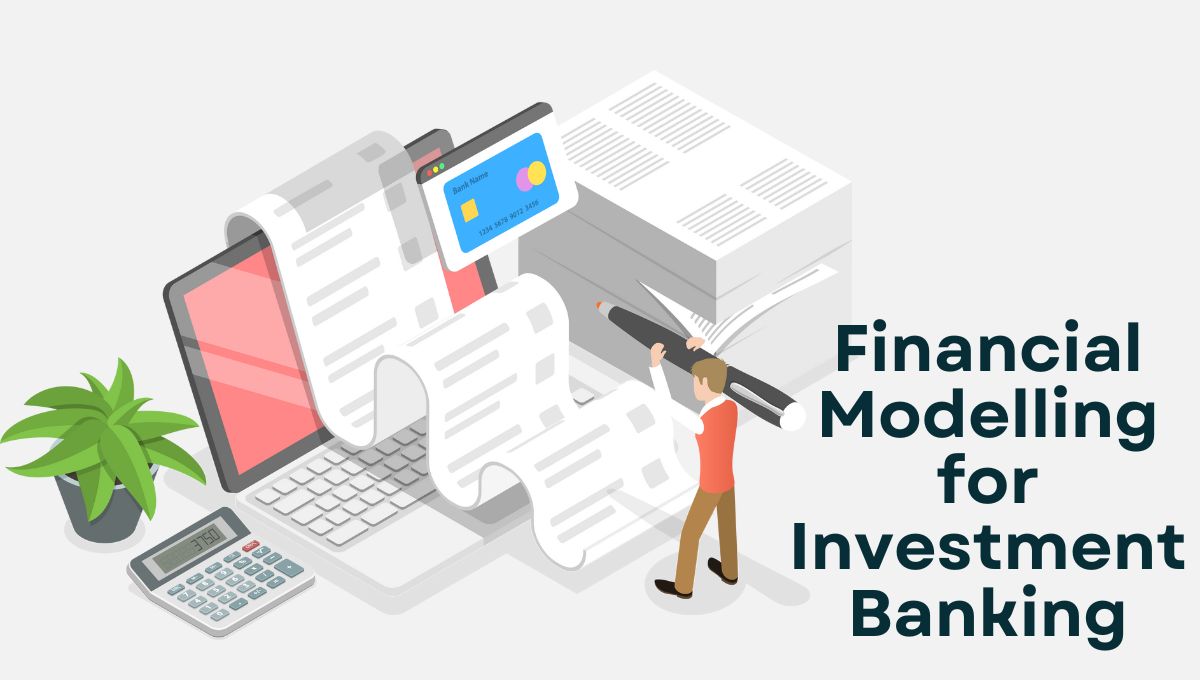Investment banking career is perhaps one of the most elite careers within the entire financial world and also a highly paid one. The investment banking industry requires professionals who stand up to handle business deals, from millions to acquisitions, mergers and acquisitions, flotations, IPOs and many others. All of them are complex and nuanced subjects which call for financial modeling for these transactions.
Financial modelling is the heart and core of any investment banking decision. It might be valuing companies, analysing risks associated with them, or structuring deals in investments: financial models help make such decisions based on data-driven information.
Knowledge regarding financial modelling techniques is pretty essential for building up a healthy career in investment banking.
👉 Further Reading: What is Financial Modelling? (Investopedia)
Types of financial models used in practice
How to develop step-by-step guide to a financial model
- Financial modelling as a tool to support the process of valuation, risk analysis, and making decisions overall.
- Recommended courses for investment banking for financial modelling
- Salaries and careers, case studies from actual practice
- Mistakes and errors usually done in financial modeling
- Current advanced techniques in financial modeling with hedge funds and private equity.
You will learn financial modelling in every detail through this guide. This blog topic is a clear roadmap for mastering investment banking skills.
What is Financial Modelling?
Definition & Importance
Financial modelling is the process of structuring a representation of a company’s performance. It does this by simulating future financial performance, valuation, and risk assessment using historical data, assumptions, and projections.
A financial model is applied by:
Investment bankers, hedge fund managers, equity researchers, etc. need them for strategic decisions in corporate finance and other related fields.
Application of a Financial Model
- To analyze the company before merging or acquiring, or for its Initial Public Offering
- To analyze the investment opportunities and the risk that accompanies them
- For estimating their probable financial performances and cash flow
- In Corporate Finance and financial planning
- It helps in structuring financial deals and plans relating to capital raising.
Advanced professionals would use Python, SQL, R, Power BI, or Tableau for automating the presentation.
The Importance of Financial Modelling in Investment Banking
The services offered by investment banking services are complex financial deals; and in those financial deals, accuracy, valuation, and risk analysis are the front-line requirements. So, data-driven insights are very crucial inputs behind billion-dollar deals.
Why Investment Bankers Use Financial Modelling
- Valuation & Investment Decision Making
In M&A, IPO pricing, and corporate finance advisory.
It would help the investment banker to get the fair market value of the firm before the deal could happen.
- Risk Analysis & Financial Modeling
- Experts can foresee how the company would be performing in case of an economic downturn.
- Experts can best handle the risk in terms of finances with the support of sensitivity and scenario analysis
- Deal Structuring & Fund Raising
Financial models would be a template for the IPO, debt financing, and an equity transaction. A model would present what kind of capital structure the firm is going to require.
- Data-Based Client Reports
An investment banker needs to let his clients know what result is coming out from proper information. A built model can make a great case in front of the investor and stakeholders.
Types of Financial Modeling applied in Investment Banking
The methodology of financial modelling is decided by an investment banker depending on the deal type and mode of financial investing.
- Discounted Cash Flow (DCF Model)
Under this model, it approximates the free cash flows that any company may receive in the short term and takes it value back to the date of the current value.
This could be used when valuing the business and on its stock as well as investment chances.
- Comparable Company Analysis (CCA)
This involves gathering multiples from the industry of comparable companies in terms of valuations. Determined for calculation of the company’s relative market value.
- Precedent Transactions Analysis
It utilises historical M&A transactions in formulating an argument for the valuation multiples. Infer the emerging value of the company in case an acquisition takes place
- LBO Model
Whether the company would be bought on debt or not. The model is very widely used by private equity houses.
- M&A Model
It infers whether the acquisition would be accretive or dilutive to earnings.
Building a Financial Model: Step by Step
Step 1: Purpose of the Model
Specify the purpose for valuation, risk analysis, or investment decisions
Step 2: Historical Data
Memos: Obtain the income statements, balance sheets, and cash flow statements.
Step 3: Core Assumptions
Get the growth rates, interest rates, revenue trends, and discount rates
Step 4: Core Financial Statements
It formulates an integrated income statement, balance sheet, and cash flow statement.
Step 5: Sensitivity & Scenario Analysis
It will focus on best case, worst-case, and base case scenarios.
Step 6: Validate the Model & Stress Test
All the calculations must be logical & precise.
Investment Banking Professionals Salary & Career Growth in India
| Years of Experience | Annual Average Salary (₹) |
| Fresh Graduates | 8,00,000 – 12,00,000 |
| Middle-Level Professionals | 15,00,000 – 30,00,000 |
| Senior-Level Professionals | 30,00,000 – 60,00,000 |
Frequently Asked Questions – FAQs
- What is financial modeling in investment banking?
Financial modeling is the projection of a company’s performance through financial presentation.
- How long does it take to learn financial modeling?
Generally 8–12 weeks with serious practice.
- Does financial modeling certification have value?
Yes, investment banking courses like CIBOP lead to employment.
Key Takeaways
Financial modelling is essential for investment bankers to analyse valuations, assess investments, and structure deals.
Different models serve different purposes, from DCF for valuation to LBO for private equity transactions.
Investment banking offers lucrative salaries, and mastering financial modelling through courses like CIBOP can accelerate career growth.
Want to get into Investment Banking? The Certified Investment Banking Operations Professionals (CIBOP) Program trains the candidates for practical investment banking.
Now Enrol in our program today CIBOP.







